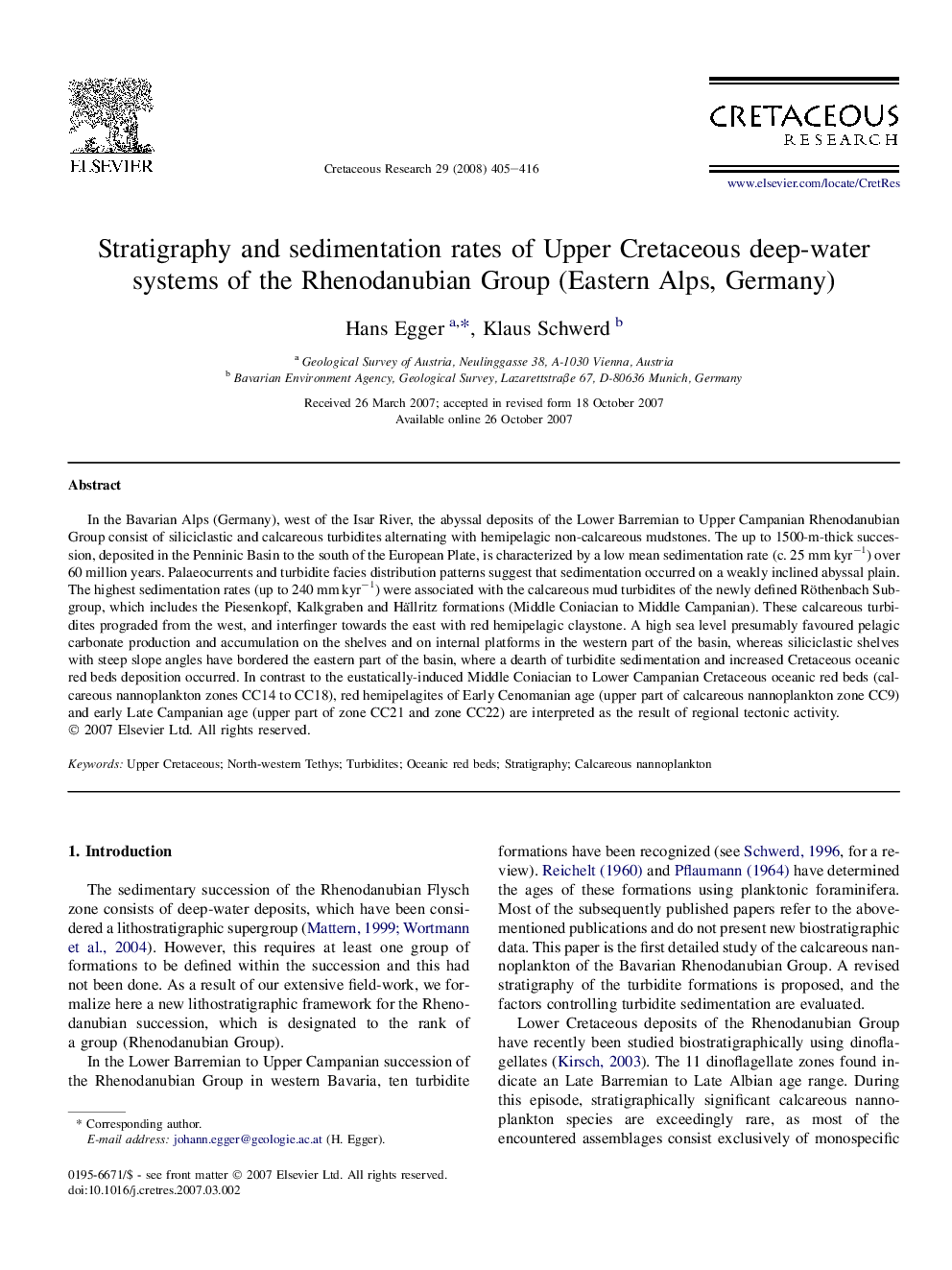| Article ID | Journal | Published Year | Pages | File Type |
|---|---|---|---|---|
| 4747676 | Cretaceous Research | 2008 | 12 Pages |
In the Bavarian Alps (Germany), west of the Isar River, the abyssal deposits of the Lower Barremian to Upper Campanian Rhenodanubian Group consist of siliciclastic and calcareous turbidites alternating with hemipelagic non-calcareous mudstones. The up to 1500-m-thick succession, deposited in the Penninic Basin to the south of the European Plate, is characterized by a low mean sedimentation rate (c. 25 mm kyr−1) over 60 million years. Palaeocurrents and turbidite facies distribution patterns suggest that sedimentation occurred on a weakly inclined abyssal plain. The highest sedimentation rates (up to 240 mm kyr−1) were associated with the calcareous mud turbidites of the newly defined Röthenbach Subgroup, which includes the Piesenkopf, Kalkgraben and Hällritz formations (Middle Coniacian to Middle Campanian). These calcareous turbidites prograded from the west, and interfinger towards the east with red hemipelagic claystone. A high sea level presumably favoured pelagic carbonate production and accumulation on the shelves and on internal platforms in the western part of the basin, whereas siliciclastic shelves with steep slope angles have bordered the eastern part of the basin, where a dearth of turbidite sedimentation and increased Cretaceous oceanic red beds deposition occurred. In contrast to the eustatically-induced Middle Coniacian to Lower Campanian Cretaceous oceanic red beds (calcareous nannoplankton zones CC14 to CC18), red hemipelagites of Early Cenomanian age (upper part of calcareous nannoplankton zone CC9) and early Late Campanian age (upper part of zone CC21 and zone CC22) are interpreted as the result of regional tectonic activity.
